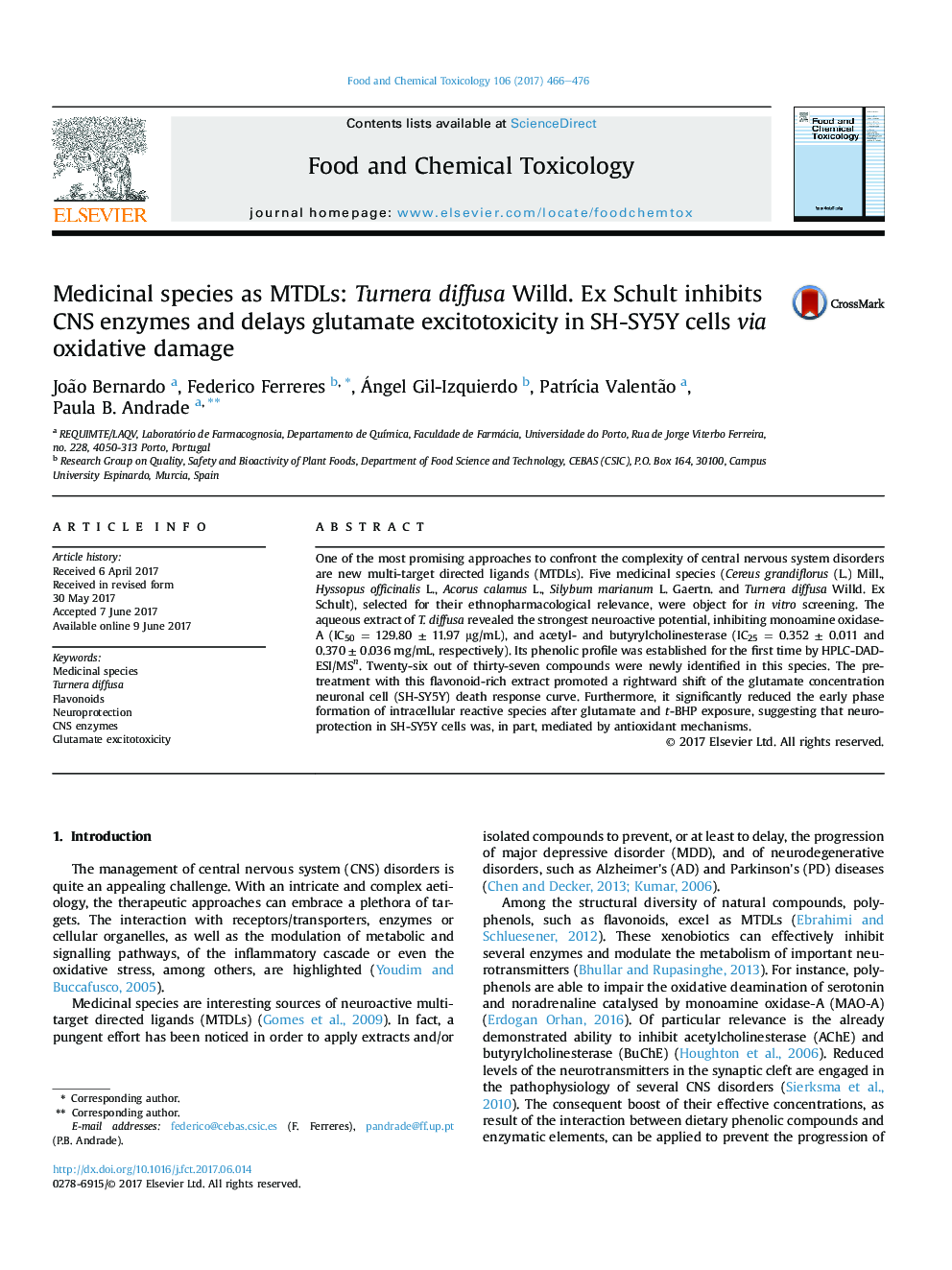| Article ID | Journal | Published Year | Pages | File Type |
|---|---|---|---|---|
| 5560144 | Food and Chemical Toxicology | 2017 | 11 Pages |
â¢The neuroactive potential of five medicinal species was assessed in vitro.â¢T. diffusa aqueous extract displayed the best inhibitory activity towards CNS-related enzymes.â¢Twenty-six compounds were identified for the first time in T. diffusa.â¢T. diffusa protected SH-SY5Y cells from glutamate-induced oxidative damage.
One of the most promising approaches to confront the complexity of central nervous system disorders are new multi-target directed ligands (MTDLs). Five medicinal species (Cereus grandiflorus (L.) Mill., Hyssopus officinalis L., Acorus calamus L., Silybum marianum L. Gaertn. and Turnera diffusa Willd. Ex Schult), selected for their ethnopharmacological relevance, were object for in vitro screening. The aqueous extract of T. diffusa revealed the strongest neuroactive potential, inhibiting monoamine oxidase-A (IC50 = 129.80 ± 11.97 μg/mL), and acetyl- and butyrylcholinesterase (IC25 = 0.352 ± 0.011 and 0.370 ± 0.036 mg/mL, respectively). Its phenolic profile was established for the first time by HPLC-DAD-ESI/MSn. Twenty-six out of thirty-seven compounds were newly identified in this species. The pre-treatment with this flavonoid-rich extract promoted a rightward shift of the glutamate concentration neuronal cell (SH-SY5Y) death response curve. Furthermore, it significantly reduced the early phase formation of intracellular reactive species after glutamate and t-BHP exposure, suggesting that neuroprotection in SH-SY5Y cells was, in part, mediated by antioxidant mechanisms.
Graphical abstractDownload high-res image (230KB)Download full-size image
